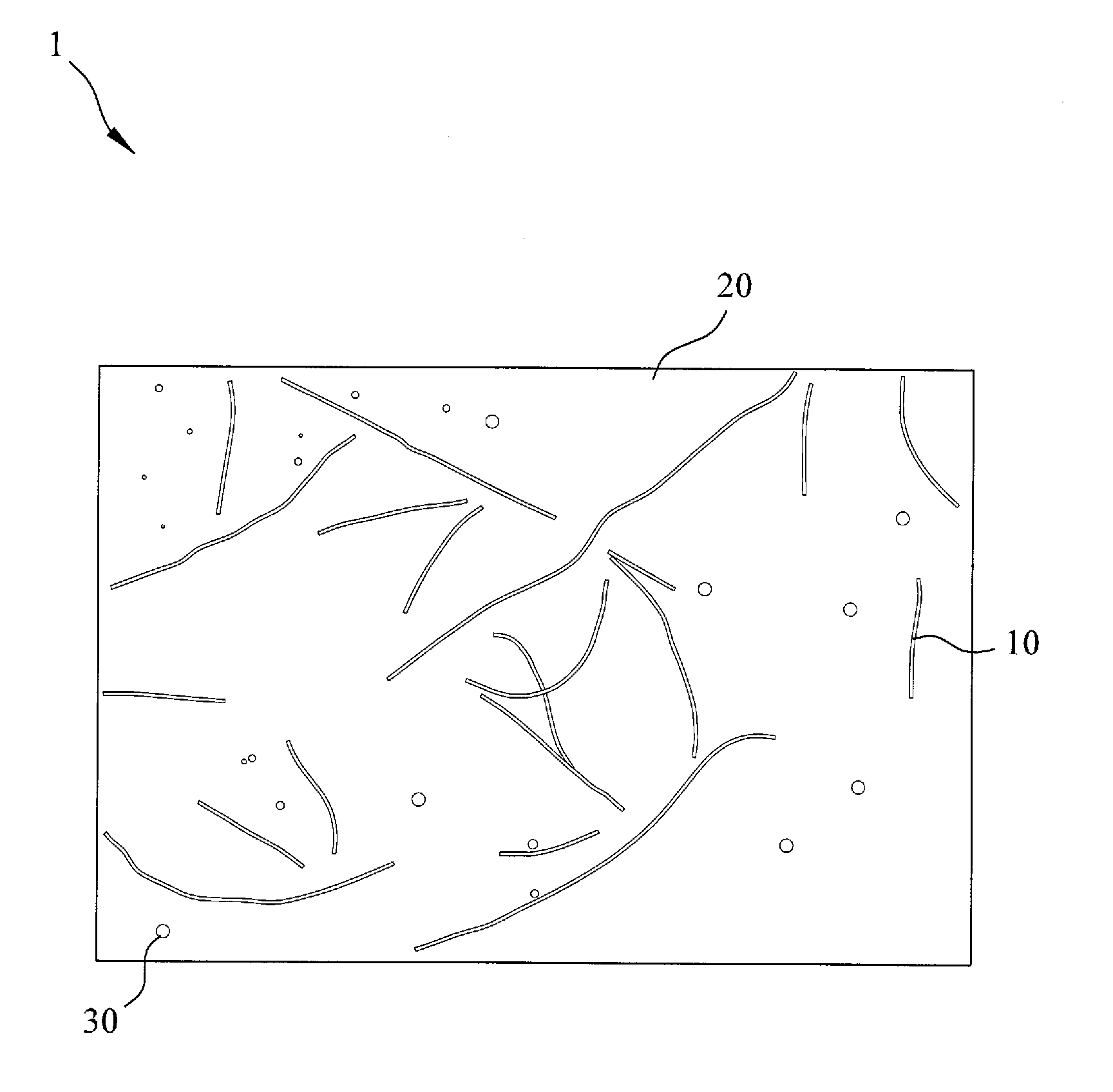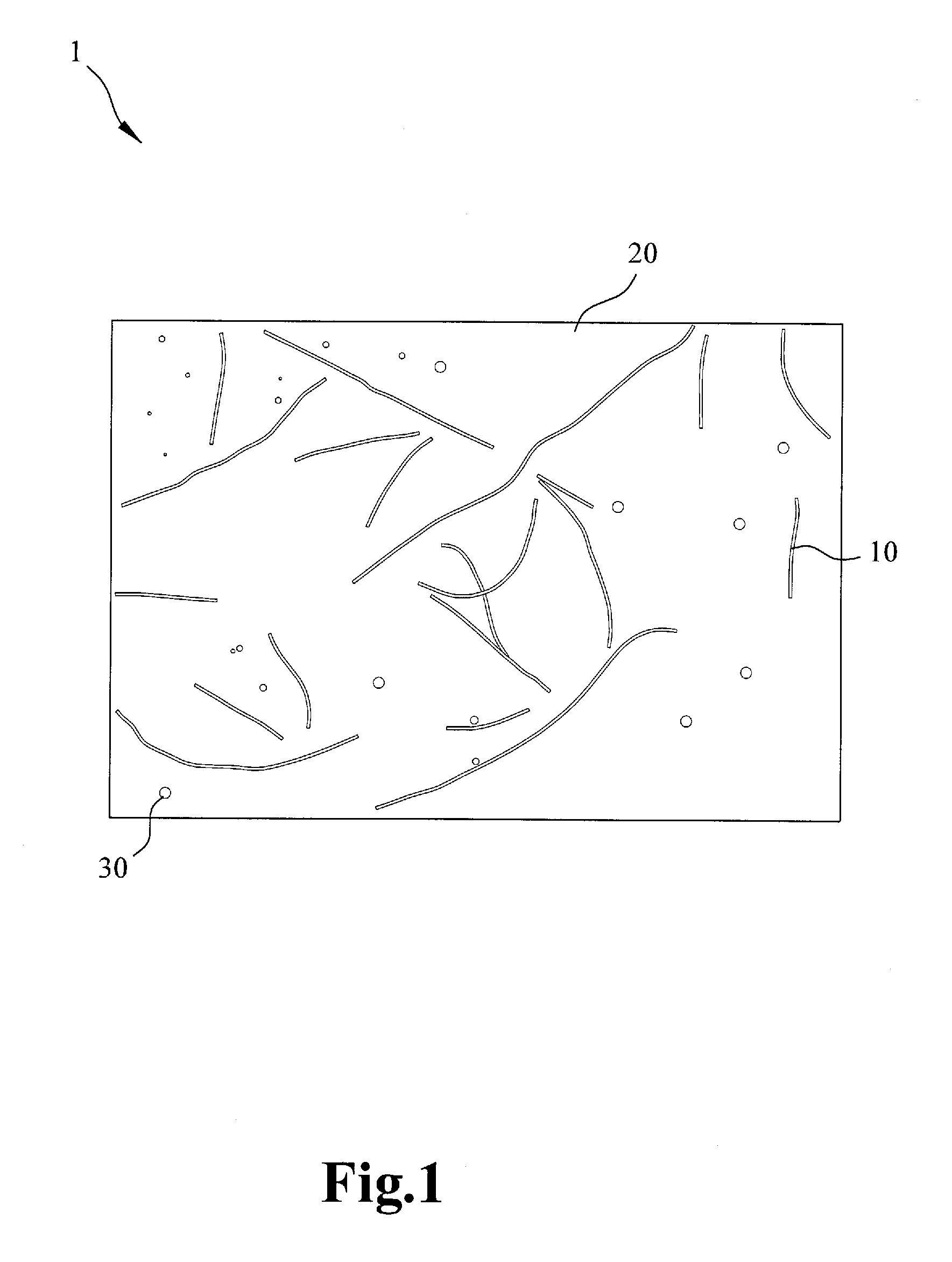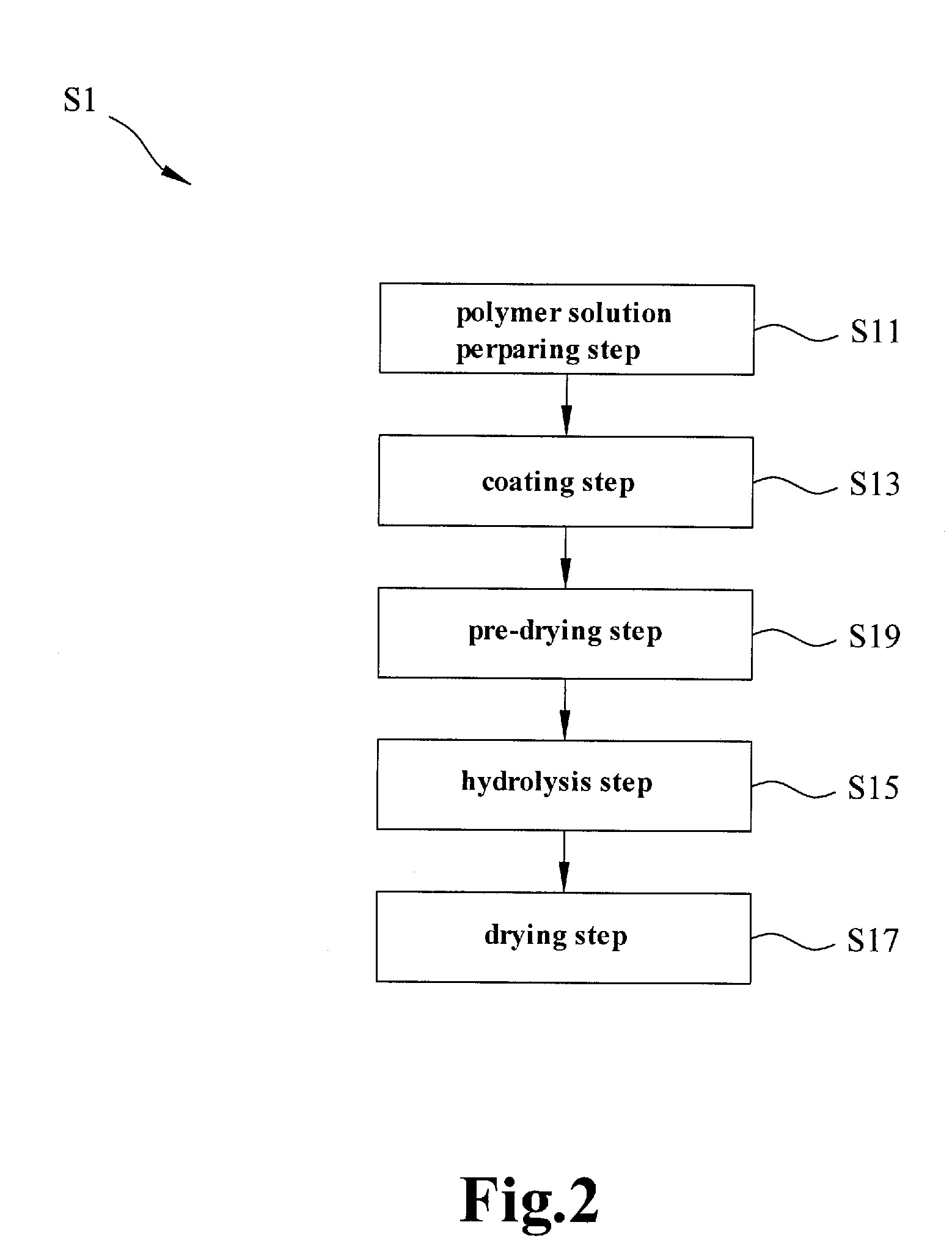Electrochemical separation membrane and the manufacturing method thereof
a technology of electrochemical separation membrane and manufacturing method, which is applied in the direction of filtration separation, separation process, cell components, etc., can solve the problems of low cost of dry type method, poor wet electrolyte transfer effect to separation membrane, and high final price of separation membrane, so as to improve thermal stability and increase the stability of the interface of the electrochemical device
- Summary
- Abstract
- Description
- Claims
- Application Information
AI Technical Summary
Benefits of technology
Problems solved by technology
Method used
Image
Examples
experimental example 1
[0040]Experimental Example 1 describes manufacturing the ceramic particles by hydrolysis, wherein the ceramic particles and a polymer material are formed as a continuous phase and fill into the micro holes of a fabric support backbone structure. Takes polyvinylidene fluoride 6 wt % to dissolve in acetone with purity 99% firstly, maintains 4 hours at 60° C., and then add tetraethyl orthosilicate 2.5% and 5%, and 1 ml ammonia 28% serving as the catalyst to form the polymer solution after lowering the temperature to the room temperature. Stir 20 minutes to 1 hour to cause the polymer solution as slurry. Then coat the polymer solution dissolved and stringed uniformly on polyethylene or polypropylene fabric base material, and then a membrane predecessor is formed after the acetone vaporizes naturally. Put the membrane predecessor into super pure water 10 second to 1 minute to hydrolyze. A porous ceramic-polymer composite membrane which can be used to an electrochemical separation membran...
experimental example 2
[0042]Experimental Example 2 describes manufacturing the ceramic particles by hydrolysis, wherein the ceramic particles and a polymer material are formed as a continuous phase and fill into the micro holes of a fabric support backbone structure. Take polyvinylidene fluoride 6 wt % and polyethylene cellulose 0.5% to dissolve in acetone 90 wt % and pure water 3.5% firstly, maintains it for 4 hours at 60° C., then add tetraethyl orthosilicate 2.5% and 5%, and 1 ml ammonia 28% serving as the catalyst to form the polymer solution after lowering the temperature to the room temperature, and stir for 20 minutes to 1 hour to cause the polymer solution as slurry. Then, coats the polymer solution dissolved and stringed uniformly on polyethylene or polypropylene fabric base material, and then a membrane predecessor is formed after the acetone vaporizes naturally. Put the membrane predecessor into super pure water 10 second to 1 minute to hydrolyze. A porous ceramic-polymer composite membrane wh...
experimental example 3
[0044]The method and steps of Experimental Example 3 is similar to Experimental Example 2, the only difference is to coat the polymer solution dissolved and stringed uniformly on polyethylene or polypropylene porous membrane base material, and then a membrane predecessor is obtained after the acetone vaporizes naturally. Put the membrane predecessor into super pure water 10 second to 1 minute to hydrolyze. A porous ceramic-polymer composite membrane which can be used to an electrochemical separation membrane is obtained after drying, wherein the porous ceramic-polymer composite membrane has a thickness ranging 30˜40 μm.
[0045]Compare the cycle electrical properties at 5 C charge / discharge rate of the battery using the electrochemical separation membrane made from Experimental Example 3 of the present invention and the battery using commercial Celgard separation membrane at 55° C., and the comparing result is shown as FIG. 5. The result shows that the battery used the electrochemical ...
PUM
| Property | Measurement | Unit |
|---|---|---|
| porosity | aaaaa | aaaaa |
| thickness | aaaaa | aaaaa |
| thickness | aaaaa | aaaaa |
Abstract
Description
Claims
Application Information
 Login to View More
Login to View More - R&D
- Intellectual Property
- Life Sciences
- Materials
- Tech Scout
- Unparalleled Data Quality
- Higher Quality Content
- 60% Fewer Hallucinations
Browse by: Latest US Patents, China's latest patents, Technical Efficacy Thesaurus, Application Domain, Technology Topic, Popular Technical Reports.
© 2025 PatSnap. All rights reserved.Legal|Privacy policy|Modern Slavery Act Transparency Statement|Sitemap|About US| Contact US: help@patsnap.com



